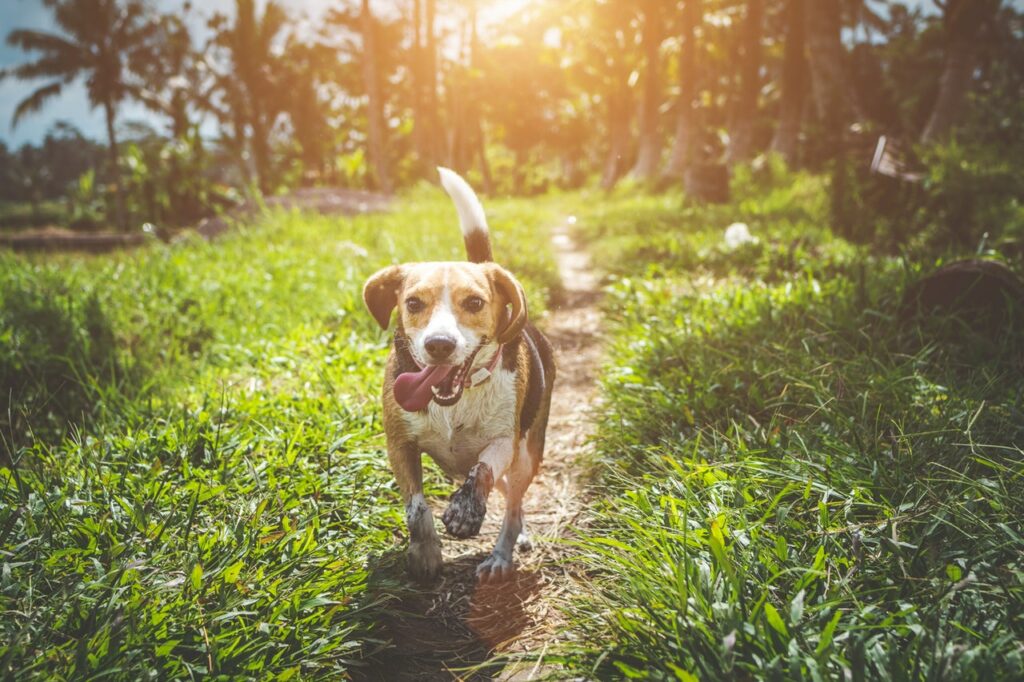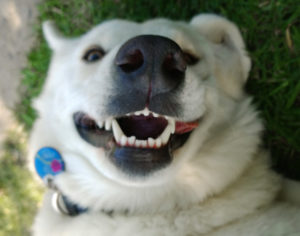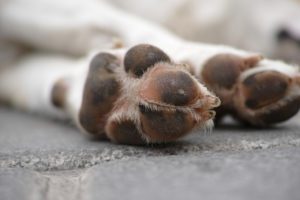When it comes to having a dog as a part of your family, they are surely as enthusiastic and playful as family members can get. But being so active has its setbacks as it also makes them prone to injuries. And just because you don’t see your beloved pet whining or crying it doesn’t mean it isn’t in pain. Limping is perhaps the surest sign of pain, as your dog clearly cannot put any weight on the leg.

The cause
The tricky part is that limping can occur from a variety of causes: from simply muscle strains to broken something, but it could even be due to severe systemic infections. So step number one is always: CONTACT YOUR VETERINARIAN. It is likely that he or she will advise you to monitor your dog for 24 hours, and obviously make him or her rest as much as possible to see if the problem will improve or worsen. If there’s no improvement, obviously you’ll have to come in for an appointment. But we know how terrible it is when your pooch is in pain and cannot tell you what is troubling him or her so we’ve have made you a list of possible reasons to keep in mind.
Paw injury
Have you ever stepped on a piece of something sharp? Well, your dog might have. If a foreign body of any kind: glass, nails, sticks, thorns, plant matter, or anything else gets trapped in there, you will know. Besides having trouble walking, your dog will also lick its paw excessively.
Soft tissue strains
Minor soft tissue injuries are likely one of the most common reason for limping in dogs. As dogs are often quite active and athletic, this type of injury is relatively common and usually resolves completely in all but the most severe of injuries. Damage to the muscles, tendons, and ligaments are common in dogs but can take some time and patience before they can be repaired.
Tears
Just like with humans, ligament tears can be quite painful for dogs. They will result in sudden limping and one of the most common reasons is a ruptured cruciate ligament. While not life-threatening, this immobilizing injury must be addressed. It can happen both due to trauma and degeneration of ligament, even as an athletic injury of a healthy dog. Although rest and medication may help, surgery is usually recommended to repair the ruptured ligament. In general, prognosis after surgery is good, with an 85%-90% chance of return to normal activity level. There are several different surgical approaches and your vet will recommend which one is best for your dog, given its pros and cons.
Infectious diseases
Some conditions cause gradual wear and tear on joints and the musculoskeletal system and this in turn results in limping. Infections like Ehrlichia and Lyme disease can also cause joint pain and limping, which is just one more reason why it is important to have your dog on an effective tick preventative.
Inflammatory conditions
Panosteitis, sometimes called growing pains, is a painful inflammation of the outer surface or shaft of one or more long bones of the legs. It’s a condition that affects young, rapidly growing dogs (typically larger breeds). It may occur in more than one bone at a time. It can even move from one leg to another. Limping occurs suddenly and usually spontaneously without a history of trauma.
Vascular conditions
Blood clots can form when platelets and plasma proteins in the blood thicken and clump together. If these clots end up being stuck in the vessels, they can cut off the flow of blood to essential parts of the body. This part can be the leg, but also the heart and the brain. As for the leg scenario, besides limping, the limb will also be cold to touch. Blood clots can happen for a variety of reasons besides an injury, some of them being:
- Aneurysm
- Cancer
- Cushing’s disease
- Damaged vessels
- Diabetes
- Heartworm
- High cholesterol
- Anemia
- Inflamed pancreas
- Kidney disease
- Long term steroid or corticosteroid use
- Parasite infection
- Reduced blood flow
- Underactive thyroid
Orthopedic problems
Speaking of gradual wear and tear, osteoarthritis, hip dysplasia, elbow dysplasia, patellar luxation, ligament disease, intervertebral disk disease, and osteochondritis dissecans (OCD) can all cause limping on any of the affected limbs. Fortunately, you have vets specialised in Orthopedia so all of the above can be treated.
Breed-specific issues
Each breed has its own ‘Achilles Tendon’. For example, smaller breeds tend to be more prone to hip dysplasia. On the other end, fast growing breeds and overweight dogs are more prone to sprains of all sorts. More specifically, dogs with long backs, like Dachshunds and German Shepherds, are more likely to develop strains and sprains in the back and neck area. Rottweilers, Labrador retrievers, Newfoundlands, and Staffordshire terriers are more prone to cruciate ligament injuries.
Treatment
The treatment for your dog’s lameness will vary depending on the cause. Your dog’s treatment plan could be as simple as a few days of rest, or it could entail surgery, further testing, and a prolonged recovery. While this may sound intimidating, in most cases the sooner you get your dog in to see the veterinarian, the better the prognosis. And it is essential that you follow your veterinarian’s instructions, as each dog is unique, as is each injury and condition.
REST
If the damage is minor and does not require surgery, aftercare should be fairly simple. Keep your dog as inactive as possible during the first stage of the healing period to avoid causing the sprain to reoccur while you continue with the anti-inflammatories. If your dog needs surgery, it is essential to keep the site clean and free from dirt and debris. You will need to keep your pet from interfering with the site and examine it often over the next two or three weeks for swelling, bleeding or pus. Keeping your recovering dog in a calm, quiet environment can only enhance healing. Make sure that the prescribed food and water are within easy reach as well. If you need to walk your dog for bathroom purposes, make sure you walk SLOWLY and on a leash
Non-steroidal anti-inflammatory drugs (NSAID)
Your vet will most likely prescribee meloxicam or firocoxib or deracoxibm or carprofen, all of which belong to the NSAID family of drugs. It is up to your vet to decide how many days they will be used, usually until your dog gets better and stops limping.
Heating Pad
Heat therapy is an easy and effective way to make your dog feel happier while relieving pain and even arthritis. Heat is great at reducing stiffness and muscle spasms, increasing blood flow and ultimately, relieving pain. There are countless heating devices with wraps and electrical heating blankets. Please make sure to follow the instructions on the packaging to avoid burning your dog’s skin.
You even have natural and DIY alternatives
Warmed cherry pits are easily heated both in the oven and microwave and do a great job at preserving heat so there is no need to make the pillow too hot. Alternatively, you can even make one version at home by filling up a sock with salt or uncooked rice and tie it up at the open end. This “special sock” can then be microwaved to the desired temperature or you can just heat the salt in a pan. Just make sure to shake the sock well before you apply it to ensure the heat is distributed evenly.
Ice Pack
Cold can significantly help reduce both swelling and inflammation in your dog. A cooling pad relieves pain by reducing damage to muscles immediately after an injury, surgery or heavy exercise. In addition, cold therapy will decrease muscle spasms and lead to faster healing.
And don’t forget- as scary as it might seem, you can always help your furry friend!
This list does sound scary, but keep in mind that limping can also sometimes be resolved within days and even on its own. But that being said, limping requires a complete examination from a veterinarian to determine its exact cause and give your pooch the best possible treatment. So don’t wait long before you go see your veterinarian as he or she is the only person to decide on the right approach to treat the injury in the best possible way.









